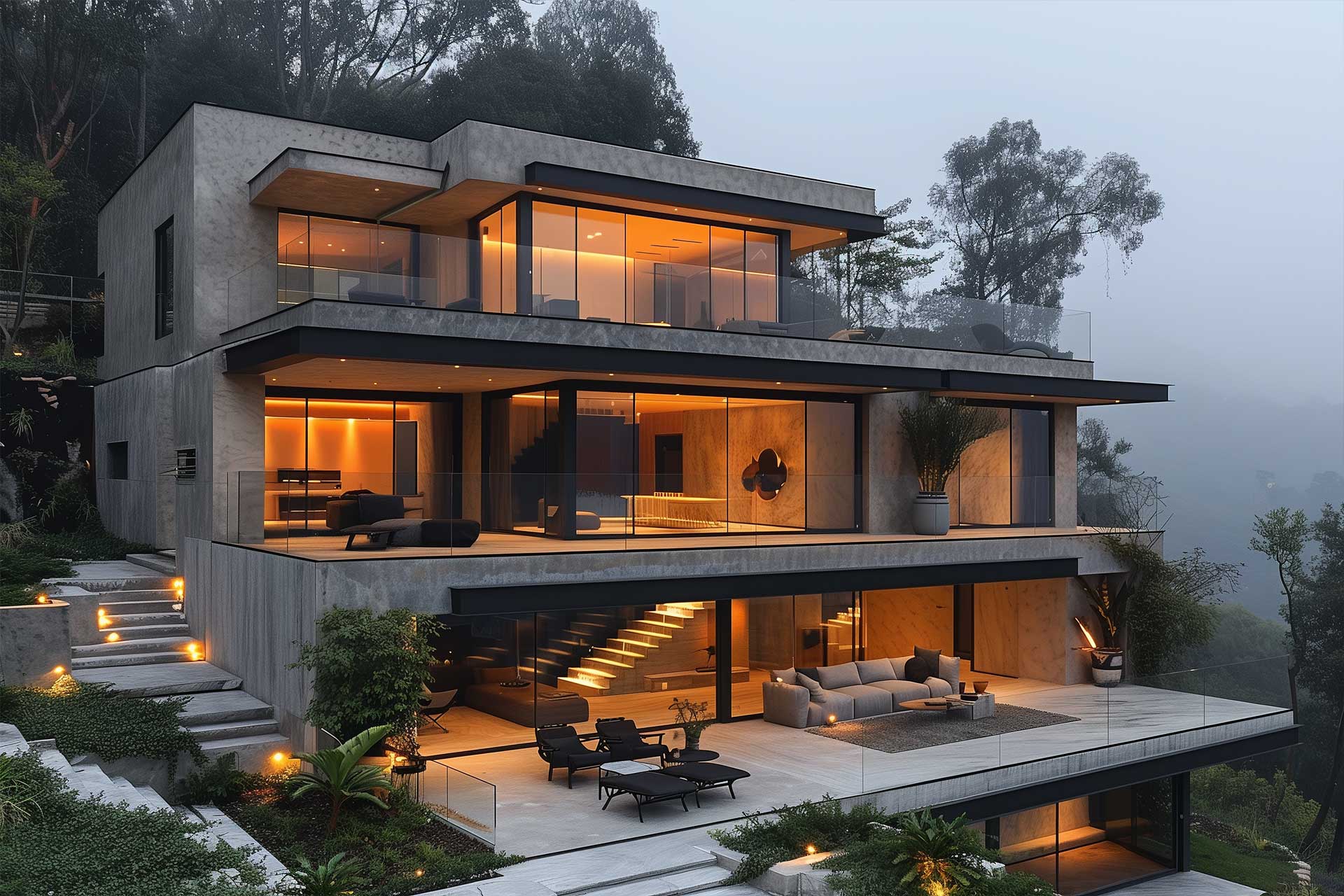
Key Trends Shaping Modern Residential Architecture
Residential architecture is evolving, driven by new technologies, environmental concerns, and changing lifestyles. Here are the top five trends shaping the future of residential design.
1. Embracing Sustainable Design

Sustainability is critical in modern architecture. Eco-friendly materials like recycled products, bamboo, and low-VOC paints are common. Energy-efficient features such as solar panels, advanced insulation, and energy-saving appliances are now standard.
2. Smart Home Technology

Innovative technology is revolutionizing homes, making them more convenient and secure. Home automation systems, including smart thermostats, automated lighting, and advanced security systems, enhance comfort and safety.
3. Open and Flexible Spaces

Modern architecture prioritizes open and adaptable spaces. Open floor plans create a seamless flow between living areas, maximizing natural light and providing multi-functional spaces.
4. Outdoor Living Areas

Extending living spaces outdoors is popular. Patios, decks, and outdoor kitchens offer additional areas for entertaining. Green roofs provide extra outdoor space and improve insulation.
5. Wellness-Oriented Design

Wellness-oriented design promotes a healthy lifestyle. Features include home gyms, meditation spaces, improved air quality systems, and abundant natural light.
Summary of Top 5 Trends
Sustainable Design: Eco-friendly materials and energy-efficient features.
Smart Home Technology: Home automation for comfort and security.
Open and Flexible Spaces: Seamless flow and multi-functionality.
Outdoor Living Areas: Patios, decks, and green roofs.
Wellness-Oriented Design: Promoting a healthy lifestyle.
These trends make homes more sustainable, connected, and adaptable to modern living. Embracing these innovations can enhance the quality of life and create homes better suited for the future.

